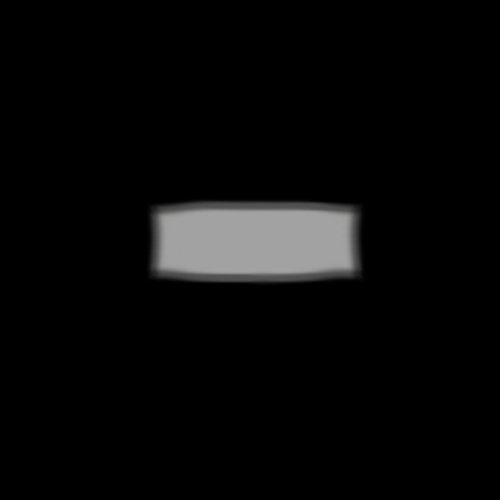Bevibel Design
Line Rider and Theater Design/Tech
Artist Statement
Sometimes, when I listen to a piece of music, the textures and timbres and colors and rhythms in the sound are so vivid that I can actually see it in my mind’s eye. I have wondered for years how it might be possible to bring what I see in my head to life. This semester, I finally found the foothold I needed to make this possible in motion graphics software.
I began this project by gathering the building blocks of color, shape, and light to create each instrument. The visuals I associated with “Not a Number”, the musical work you are listening to, composed by Sascha Ring (“Apparat”), were already etched into my brain before I began; all that was required of me was doing it justice. To accomplish this, I created simple graphics to represent each instrument, and then animated various components and added selective effects to accurately reflect the character of each note. I then assigned each instrument a space on the screen, a space that would move and change and engage in dialogue with other instruments over the course of the piece. I devised a modular structure that sorted each element of the composition into categories and sub-categories and further sub-categories, which gave me the ability to slowly modify the size or position in space of an instrument or cluster of notes, as well as enabling an enormous amount of flexibility in modifying the project as I moved along. Thus the overall structure of the work was able to be tailored and tweaked to be just right.
This work draws in equal parts on data visualization, traditional animation to music, and lighting design. One particular inspiration for this work is the animation set to Johann Sebastian Bach’s Toccata and Fugue in D Minor in Walt Disney’s Fantasia, which I have loved for most of my life. Another is Stephen Malinowski’s Music Animation Machine, a data visualization software which’s YouTube videos greatly influenced the final appearance of this work. And finally, my affinity for lighting, for which I have my father, Mark Harvey, and my mentor, Brian Bjorklund, to thank. It was my light lab project in Brian’s design class in my first year at St. Olaf where I discovered my love for colorful light, and if it wasn’t for that discovery this work might never have been created.
Artistic Process
First, a simple image was created for each "instrument" in Photoshop. Examples:
This image was then imported into After Effects (with the alpha channel for transparency functionality intact), and then attributes of each "object" were animated. Examples:
- Opacity (fading an object in and out and various speeds)
- Position on Screen (moving objects fluidly from one place to another)
- Height and Width (making objects grow or shrink, or stretching them vertically or horizontally)
- Rotation (making an object spin, quickly or slowly)
- Hue (changing the color of an object, often in relation to pitch)
- Warp/Bend (used to "bend" the string instruments into upward or downward curves)
Objects were animated to create a module, which were then often animated inside a cluster, which were then sometimes animated inside a track. Each of these were also often animated as a whole. This created a modular structure where groups of notes could be easily animated as a whole without having to change each animation individually.
Art Installation
The project also involved creating an intimate space in which to view the video. I engineered a dark room where the projected video played on repeat, using a Mac Mini, a projector, a projection screen, speakers, dark hanging blinds, and chairs. The installation remained on display for a week in the dedicated room at St. Olaf.
(These pictures were taken with the lights in the room on - while the work was on display the lights were always off)
























